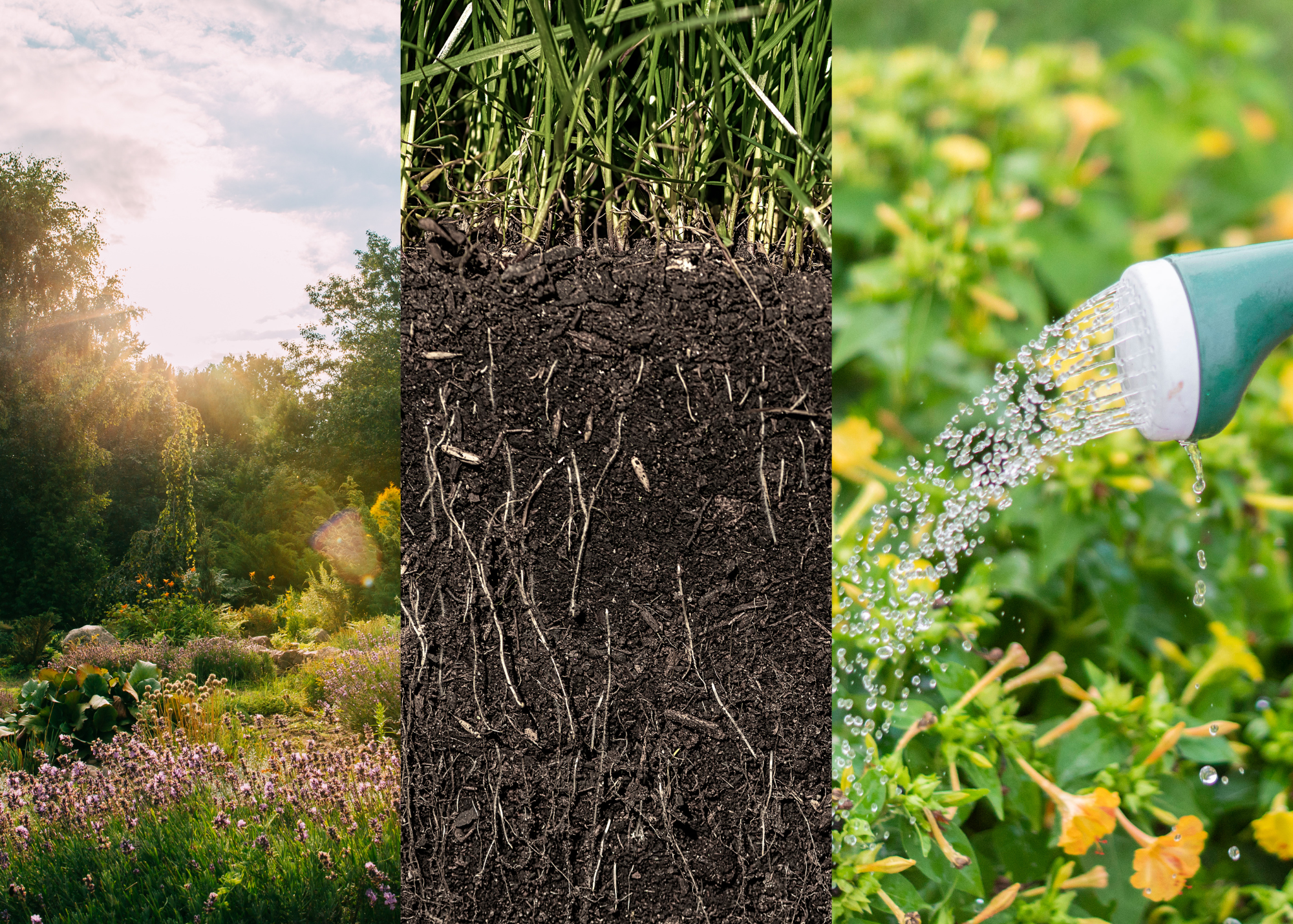
A Gardener’s Guide to Sun Exposure, Water Requirements and More!
Perhaps you’ve been in this position before. You’re at your local garden center with a beautiful plant in hand. The tag attached to the plant lays out all the requirements it needs to thrive. And yet…some interpretation is required on your part! Never fear, Florissa is here to help! Check out our excellent guide that will decode all the details listed on your plant tag.
Table of Contents
Common and Botanical Name
The common name of a plant is like a nickname that is used by local people. They can be completely different from one country to another or even from one town to another. Also known as a general name, common names are not as reliable as botanical names for identification purposes. The botanical name listed on a tag is also known as the Latin name or scientific name. A botanical name is always in Latin and consists of at least two words. The first word represents the larger group the plant belongs to (the genus), and the second word is the species. Fun fact: the second word of the botanical name usually describes some characteristic of the plant. It may give you a clue as to the colour of the flowers, whether the plant is prickly, or the habitat it naturally occurs in.
What does it mean?
A few examples of Latin words used in botanical names:
alba – white
azurea – blue
chinensis – from China
esculenta – edible
grandiflora – large flowered
micrantha – small flowered
officinalis – with herbal uses
pendula – hanging
sanguinea – blood red
sibirica – from Siberia
vulgaris – common
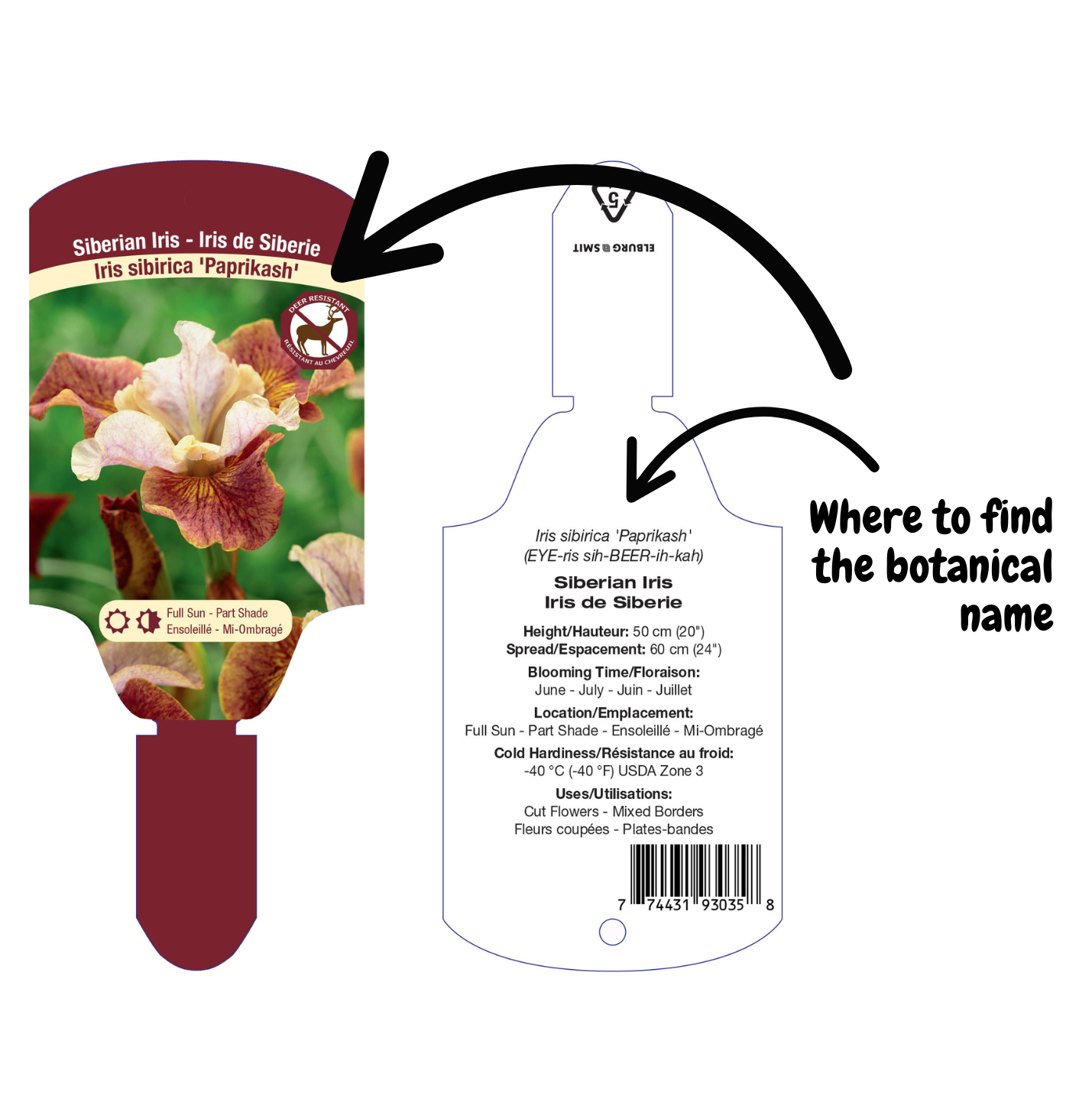
Sun Exposure
Almost all plants require sunlight to grow. But how much sunlight is important, it is not the same for all plants. You will likely find the following categories listed on plant tags:
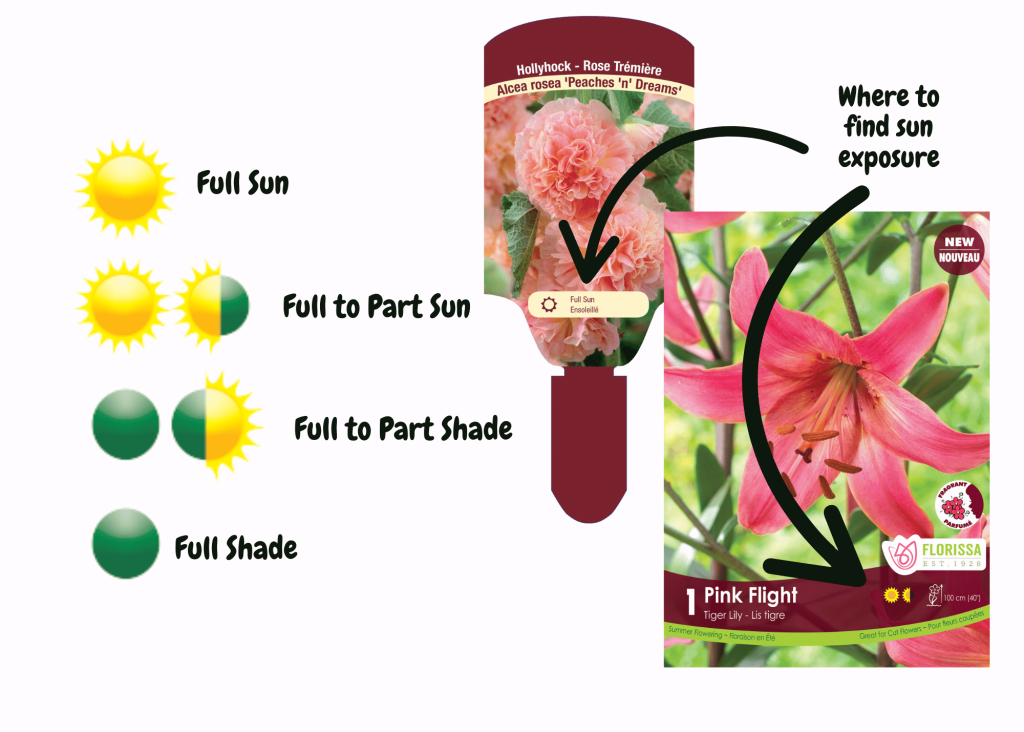
Full sun – Plants need at least 6 hours of direct sun daily (usually depicted by a sun icon)
Part sun – Plants need between 3 and 6 hours of direct sun daily (usually depicted by a half-shaded sun icon)
Part shade – Plants need between 3 and 6 hours of sun per day, but need protection from intense mid-day sun (usually depicted by a half-shaded sun icon)
Full shade – Plants require less than 3 hours of direct sun per day (usually depicted by a sun icon that is fully shaded in)
Water Requirements

Each plant has its own watering requirements. Every plant tag will detail how moist the soil should remain consistently for the plant to grow well. Some tags use icons such as raindrops to explain water needs. Or a plant label will list water requirements by stating the soil should be dry/well-draining, normal, or moist.
Dry or well-draining – maintaining dry soil means allowing the soil to dry completely between waterings. Even the soil below the top inch should be dry before watering again.
Normal – this means keeping the soil an inch below the surface moist. Allow the top inch of the soil to dry out before watering.
Moist – Water frequently to prevent the soil from drying out, but do not overwater (creating excess pools of water on the surface of the soil).
Hardiness Zones
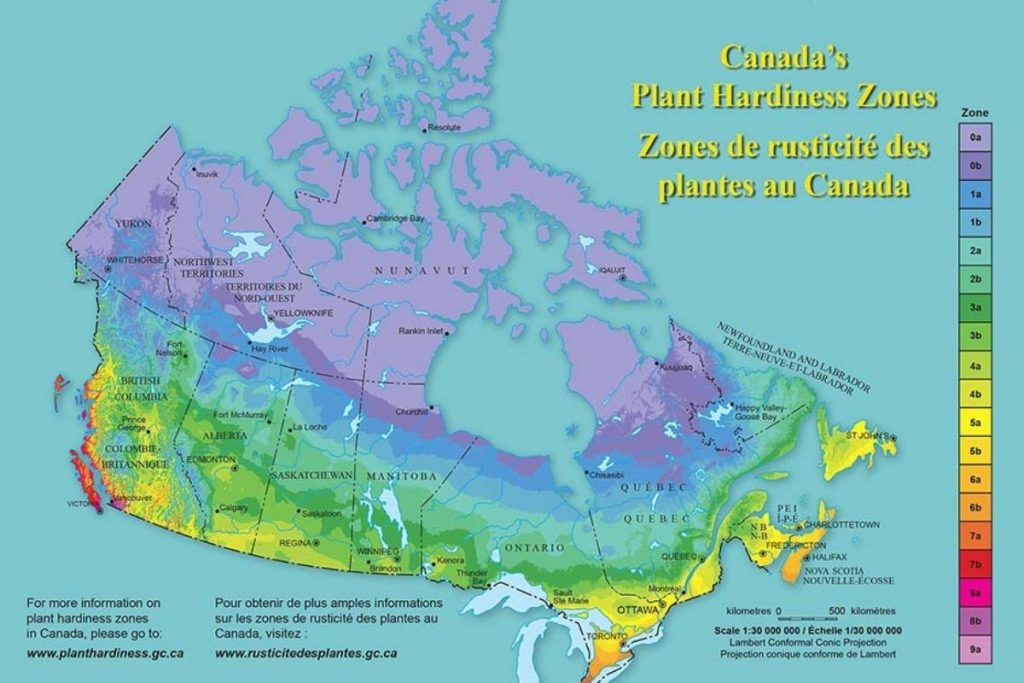
Choosing plants that will thrive based on your hardiness zone is an important part of ensuring success. A hardiness zone is a geographic area with its own range of climatic conditions relevant to a plant’s growth. Knowing which hardiness zone your live in is important. Every tag will list the zone hardiness for that specific plant. Want to learn more? Check out our Quick Guide to Hardiness Zones here.
Mature Height and Spread
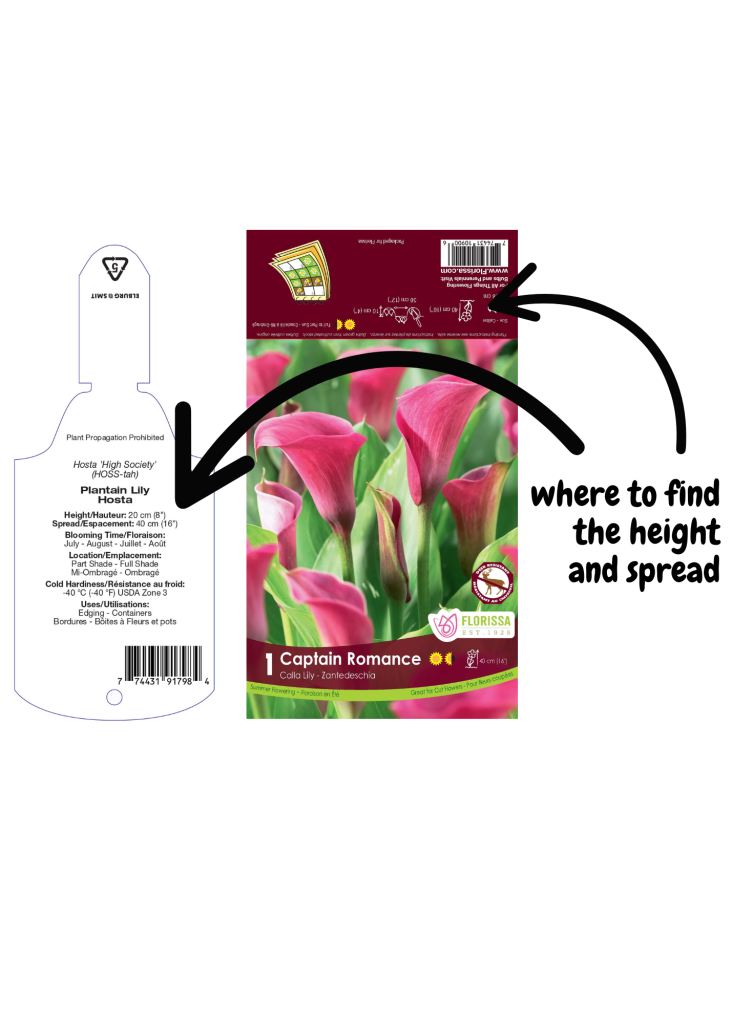
A plant label will always list measurements and descriptions of a plant once it reaches maturity or is fully grown. This is important to take into consideration when deciding where to plant. Here are three commonly used terms for describing size and shape:
Height: the plant’s mature height is listed as a range from the minimum to maximum average height. This is helpful to keep in mind for planning purposes.
Spread: the spread is how wide you can expect the plant to grow at maturity. Usually listed as a range from the minimum to maximum average spread.
Habit: the habit of a plant describes how it grows and its general form or shape. Some examples of different habits include mounding, compact, trailing, or upright.
Make sure to have this guide handy next time you go shopping at your local garden center! With a bit of information at hand, you can easily decode a plant tag and feel confident making your next plant purchase. Understanding the information in front of you starts you on your journey of caring for plants and watching them thrive under the best care possible!


